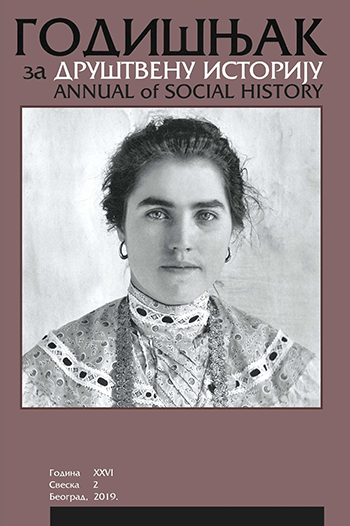Српска емиграција у Аргентини у првој деценији након Другог светског рата – прилог истраживању проблема
Serbian Emigration in Argentina during the First Decade after the Second World War – Contribution to the Research –
Author(s): Bojan V. SimićSubject(s): Politics / Political Sciences, History, Geography, Regional studies, Regional Geography, Historical Geography, Social history, Modern Age, Recent History (1900 till today)
Published by: Udruženje za društvenu istoriju
Keywords: Еmigration; Argentina; Yugoslavia; Serbia; Milan Stojadinović;
Summary/Abstract: Following the Second World War, Argentina became a country with the most emigrants of Yugoslav origin in the entire South America. Major part of those were Croats and Slovenes, while emigrants from Montenegro and Serbia made up a smaller proportion. It was estimated that there were approximately 20.000 emigrants from Serbia and Montenegro throughout South America in early-1950s. Apart from establishing their national societies in Argentina such as Serbs of Argentina “Velika Srbija”, Kolo srpskih sestara, and Obilić, Serbian emigrants launched the newspaper “Srpska zastava” in order to bring all the Serbs in Argentina together. While rejecting the “negative” Yugoslav experience, these organizations praised at the same time for the Serbian medieval past and its modern statehood from the early twentieth century. They gathered during the annual assemblies and Serbian Orthodox holidays like Vidovdan and Saint Sava. The key figure among Serbian emigrants in Argentina was Milan Stojadinović, the former Prime Minister of the Kingdom of Yugoslavia, despite he did not take any official position in such emigrant organizations. Instead, he was rather a kind of consultant to both the organization “Velika Srbija” and their leading newspapers “Srpska zastava”. On the other hand, he used his influence acquired within the Serbian community in Argentina to negotiate with the representatives of Socialist Yugoslavia during 1952 and 1953. Political changes in Argentina after the fall of Juan Peron forced Stojadinović to distance himself from the Serbian emigrant community which was certainly one of the reasons why “Srpska zastava” ended its course in 1956.
Journal: Godišnjak za društvenu istoriju
- Issue Year: XXVI/2019
- Issue No: 2
- Page Range: 55-68
- Page Count: 14
- Language: Serbian

